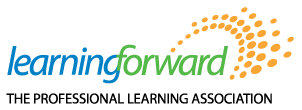History of Standards for Professional Learning
The evolution of evidence and insights about educator and student learning requires periodic updates to Standards for Professional Learning. Learning Forward has over time sustained a revision process that leads to this fourth iteration of standards in 2022.
In 1994, the National Staff Development Council (which became Learning Forward in 2010) recognized the need to lead the field in setting research-based guideposts that established a common understanding of high-quality professional learning.
With the support and urging of Hayes Mizell at the Edna McConnell Clark Foundation, the National Staff Development Council created a set of standards for staff development for middle school educators, followed quickly by standards for educators at elementary and high school levels.
Subsequent revisions followed in 2001 and 2011. Learning Forward continues to build on and learn from the wisdom of the organization’s standards leaders and pioneers, including Stephanie Hirsh, Shirley Hord, Joellen Killion, and Dennis Sparks.
With each revision, Learning Forward developed standards through the generous support of philanthropic funding. The organization also engaged esteemed advisors to offer insights and feedback during development of revised standards and associated resources. Advisors represent diverse perspectives from practitioner and research organizations, teacher associations, higher education, and school systems at the local, state, provincial, and international levels.
As Standards for Professional Learning change over time, so, too, does the language Learning Forward uses to describe educator learning. The title of the first iteration of standards uses staff development. In 2001, the next iteration became Standards for Professional Development. In the introduction to the 2011 Standards for Professional Learning, Learning Forward’s authors described how the emphasis on educator learning rather than development reflected several important shifts, including the importance of educators’ active engagement in their learning, learning as continuous improvement rather than episodic or standalone, and the direct link between educator and student learning.
Developments since the 2011 publication of Standards for Professional Learning warrant an update to give educators enduring guidance to design and implement high-quality professional learning to meet emerging needs of students and educators.
The 2022 update of the Standards for Professional Learning added new standards and organized the resulting 11 standards into three frames: rigorous content for each learner, transformational processes, and conditions for success. Developments in the ensuing years led to a 2025 edition to ensure access, relevance, and availability to all educators.
